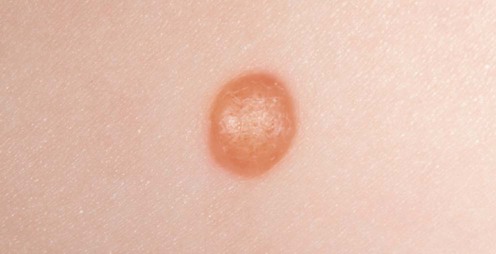The ‘JXG family’ can be divided into three groups:
Juvenile xanthogranuloma

Management strategy
 Cutaneous: JXG, benign cephalic histiocytosis, generalized eruptive histiocytosis, adult xanthogranuloma, progressive nodular histiocytosis
Cutaneous: JXG, benign cephalic histiocytosis, generalized eruptive histiocytosis, adult xanthogranuloma, progressive nodular histiocytosis
 Cutaneous with a major systemic component: xanthoma disseminatum
Cutaneous with a major systemic component: xanthoma disseminatum








